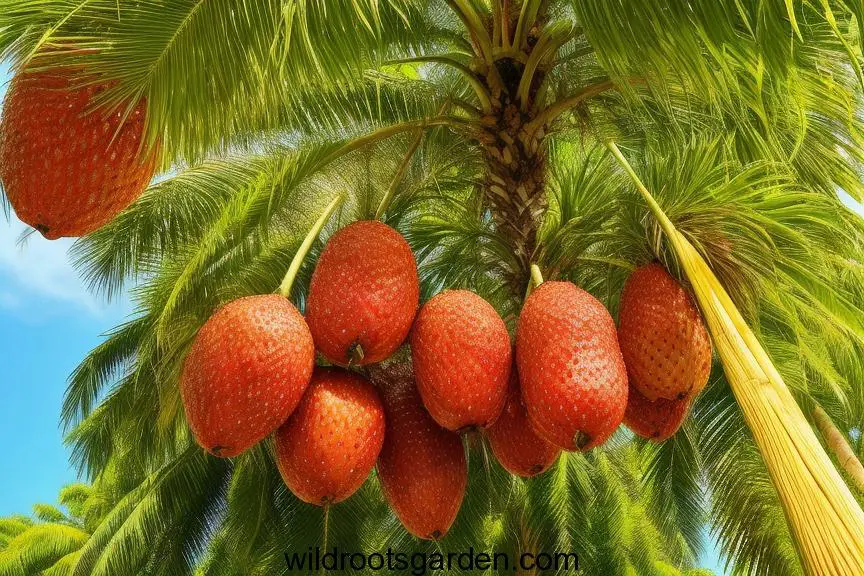Exploring Fruit from Palm trees. Dive into the captivating realm of palm tree fruits! These trees yield a plethora of unique and delightful options. Familiar names like coconut and date are joined by the rising star, the acai berry—a fruit with reputed health benefits. Our personal exploration led us to enjoy a delectable fruit bowl, featuring enticing acai. Additionally, I’ve developed a penchant for organic green tea infused with a blend of blueberry and acai concentrates. This newfound favorite has become a regular indulgence.
Within the realm of palm tree fruits, a world of possibilities awaits. Interestingly, all palm trees bear fruit. With over 2400 diverse palm species globally, a multitude of fruits emerge. While about 100 species offer edible fruit, the majority do not share this trait. Our mission here is to demystify this intriguing landscape. Get prepared to uncover the multifaceted and occasionally mouthwatering universe of palm tree fruits. Immerse yourself in this article’s revelations and set forth on your journey of discovery!
Exploring the Diverse Realm of Palm Tree Fruits
Palm trees are often associated with their distinctive appearance and connection to tropical climates. Yet, beneath their iconic exterior lies a breathtaking array of fruits—ranging from delectably sweet and juicy to enticingly tart, tangy, bitter, and unfortunately inedible.
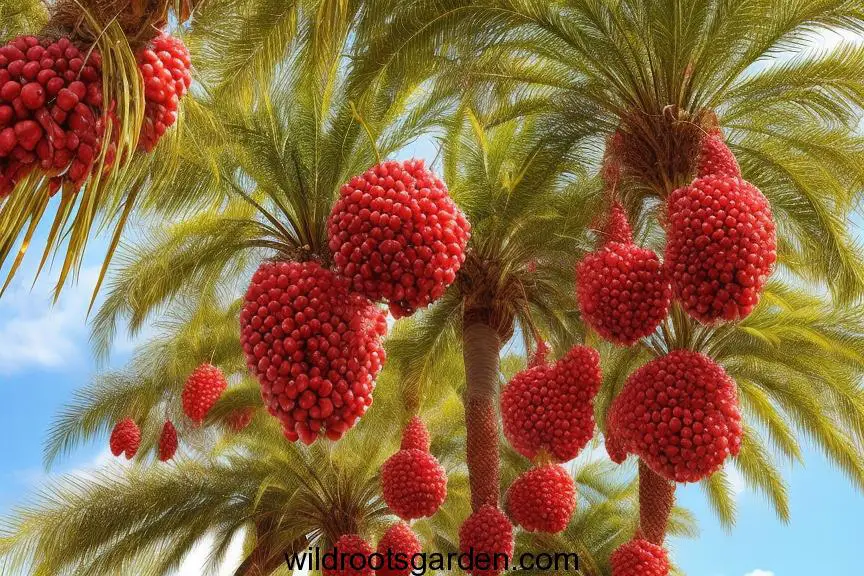
This journey takes us through a variety of palm tree fruit types. We’ll navigate the spectrum, encompassing the appealing, the questionable, and even the downright unpalatable. Join us as we delve into the world of edible, exotic, and sometimes inadvisable palm tree fruits.
Edible Palm Tree Fruits
Discovering Palatable Palm Tree Offerings Edible fruits borne by palm trees serve a practical purpose in various cultures. Certain palm species are intentionally cultivated for their prized fruit yields.
Interestingly, many of these palm tree fruits remain relatively unknown to the wider world due to their limited transportability. These delicate treasures possess no noteworthy shelf life, making their global distribution a challenge.
Should you find yourself in the regions where these palms thrive, you might seize the opportunity to partake in their flavors. A direct encounter with these fruits allows you to form your judgment on their taste and appeal. Embark on this exploration, and let your senses guide you through the captivating world of palm tree fruits!
Delectable Delights of the Peach Palm
The very name evokes visions of a palm tree bearing delicious, mouthwatering fruit. Bactris gasipaes, known as the Peach Palm, grace the landscapes from Central to South America with its presence. Its fruits come in a captivating palette of orange, yellow, or red hues. Referred to as “Chontaduro” in local parlance, this fruit holds a prominent place as a dietary staple. It enjoys the privilege of being consumed directly from the palm itself, offering a unique and immediate connection to nature’s bounty. The Peach Palm’s fruits boast a texture reminiscent of potatoes, providing a satisfying and substantial culinary experience.
In a remarkable feat of horticultural innovation, growers have even managed to cultivate a seedless iteration of this delightful fruit. This advancement adds another layer of convenience and indulgence to the Peach Palm’s allure. As you delve into this article, you’ll uncover more about the enticing world of the Peach Palm and its delectable offerings.
The Vegetable Ivory Palm: Nature’s Gift from Southern Africa
Hailing from the central regions of Southern Africa, Hyphaene Petersiana is a native marvel. With proper nurturing, it thrives with impressive speed.
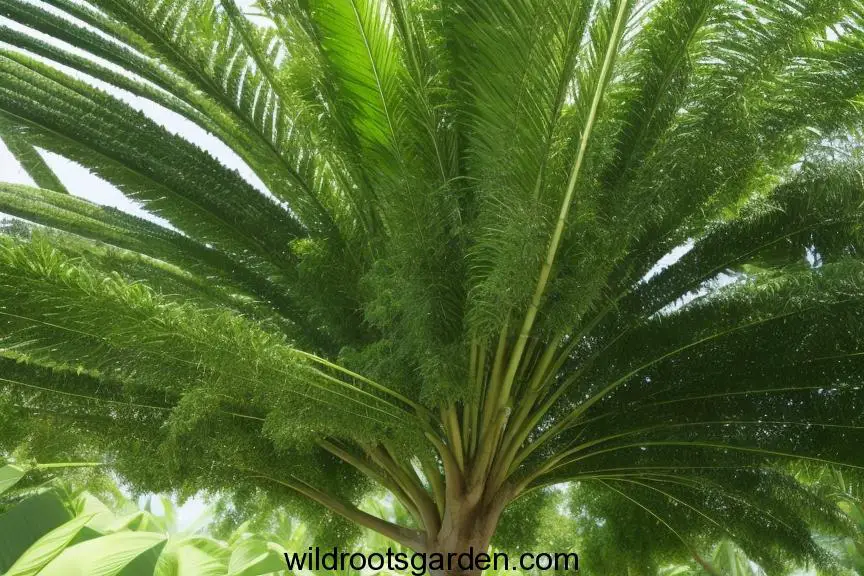
Appreciated for its delectable fruit, the journey to its sweetness involves shedding the prickly outer layer. Furthermore, various parts of this palm hold extensive regional utility. Delve into this article to learn more about this remarkable gift of nature.
Chilean Wine Palm: Hidden Delights of Jubaea chilensis
Originating in Chile’s savannahs and the lower foothills of the Andes, Jubaea chilensis is a botanical gem. Its small, rounded fruits, varying in hue from yellow to orange, offer a visual treat.
Once endangered due to wine production sap extraction, the species faced deforestation. Now under protection, its diminutive size and expansive fronds sometimes veil its fruits. But the reward lies in discovering and extracting the seed, a delicious delight reminiscent of coconut flavor. Explore more about this intriguing palm in this article.
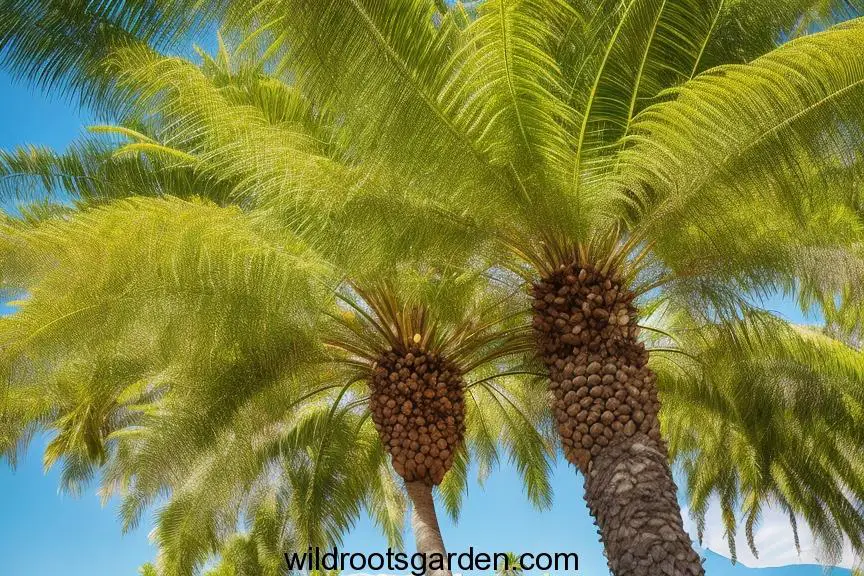
Unveiling the Sea Coconut: Lodoicea Maldivida
Dubbed the Double Coconut or Sea Coconut, Lodoicea Maldivida hails from the Seychelles’ vast islands. Its unique form resembles twin interconnected black coconuts.
Maturation requires patience, for up to seven years. Flowers attract snails and geckos, aiding in propagation. The true treasure lies within colossal inner seeds, the planet’s largest, enveloped in colossal legends. Dive into this article to uncover the allure of the Sea Coconut.

Ubussu Palm: Versatile Marvel of Manicaria Saccifera
Originating in Central and South America, Manicaria saccifera, also known as Yolillo Palm, boasts diverse local applications. Its fruit transforms into a revitalizing beverage or even a cough remedy.
Distinguished by triangular scales and curly spurs, its solid, roundish shape stands out. Often straying from its palm origins, it journeys via waterways, settling to sprout anew.
When unripe, its inner core is liquid. Embark on this article to delve into the intriguing world of the Ubusu Palm.

Moriche Palm: Amazon’s Marvel, Mauritia Flexuosa
Thriving in the humid expanse of Amazonia’s swamps, Mauritia flexuosa, or Moriche Palm, commands attention. Adorning its habitat with splendor, it offers diverse utilities like rope, hammocks, and paper, alongside its edible fruits.
Typically three inches long and egg-shaped, the fruit features a scaly skin. Ripe, dark red fruits are savored fresh or transformed into baking flour, cooking oil, and even a spirited beverage. This article unveils the captivating world of the Moriche Palm.

Red Salak: Salacca Affinis of Southeast Asia
Hailing from the islands of Southeast Asia, Salacca affinis finds its home in lush, swampy rainforests. Its scientific name, derived from Latin, signifies “kin to” or “neighboring.”
The fruit it bears is tear-shaped, drenched in red hues, and a local delicacy. Known as Luk Sala in Thailand (ลูกสละ), it also goes by the name Snake Fruit. Opinions on its flavor vary, with some describing it as mildly sour, while others liken it to a smoothie harmonizing dried bananas and dates with hints of jackfruit. This article offers a glimpse into the vibrant world of the Red Salak.
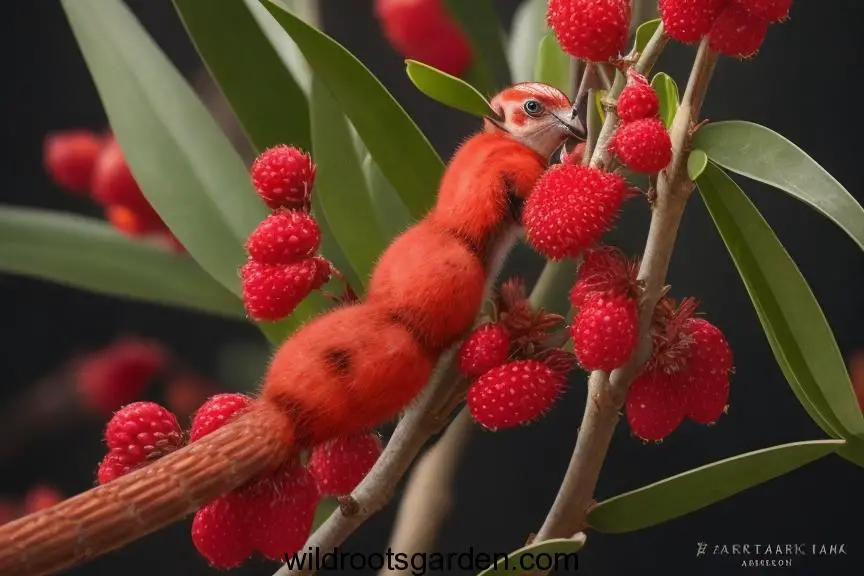
Acai Berries: Palms’ Superfood Sensation
Euterpe oleracea, the Acai Palm’s gift, has propelled acai berries into the realm of superfoods. These drupes, not berries, have risen in popularity, adorning smoothie bowls, juices, and innovative cuisines worldwide.
Originating in the Amazon rainforest’s estuarine habitat, acai berries offer a distinct flavor cherished globally. Locals incorporate them into various dishes, even enjoying the palm’s heart.
Small and purple, sometimes green, these berries emerge annually—around 8 per palm. They boast a mere 24-hour shelf life post-harvest, necessitating drying or flash freezing for transport.
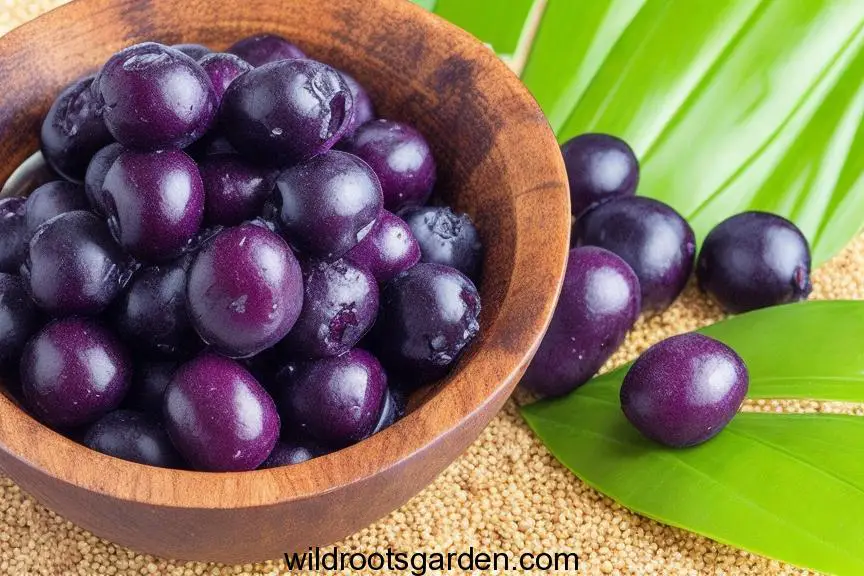
Their “Superfood” reputation stems from potent antioxidants that combat free radical damage. Acai berries abound in nutrition, from fiber and vitamin C to healthy fats, potassium, and phytochemicals. Delve into this article to explore the nutritional marvel of acai berries.
Questionably Edible: Exploring Palms’ Animal-Favored Fruits
Certain palm tree fruits might not suit human palates, though they technically qualify as edible. While you could sample them, your reaction might be intriguing. However, they hold value as valuable animal fodder.
MACAW PALM: Macaúba Recognized as Acrocomia aculeata, this palm boasts fibrous fruits. Thriving in Mexico, the Caribbean, and parts of South America, it’s renowned for its epithet “prickly.”
While some enjoy the sweet pulp, its true human utility lies in oil extraction. Animal consumption takes precedence for this fruit, yet tales from Panama allude to its sap being harnessed for a spirited beverage, igniting adventurous spirits. Delve into this article for an exploration of palm tree fruits with a twist.
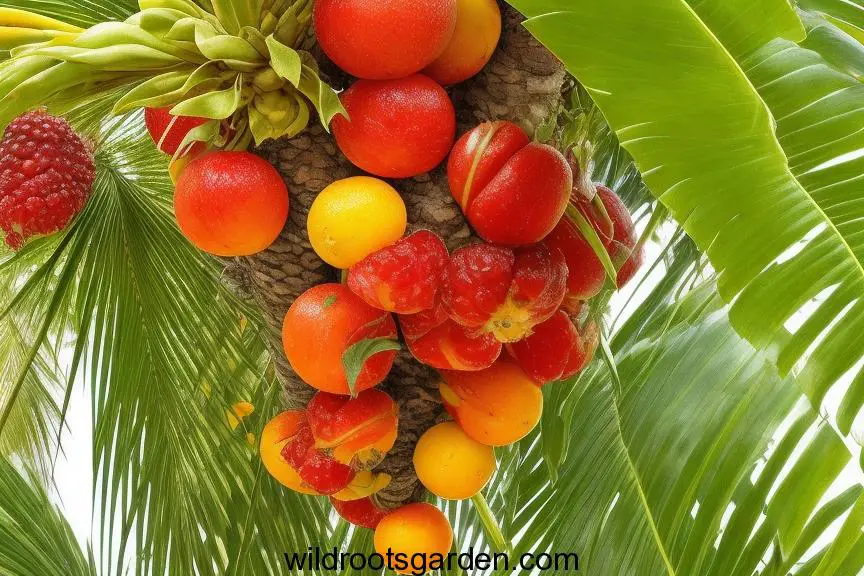
Canary Island Date Palm: Phoenix canariensis
Hailing from the Canary Islands, Phoenix Canariensis is renowned for its grandeur. With its massive stature and sizeable leaves, it serves in basketry.
Producing vibrant oval fruit, almost dayglo orange, these are technically edible. However, their taste doesn’t entice them. Discover the world of the Canary Island Date Palm in this article.
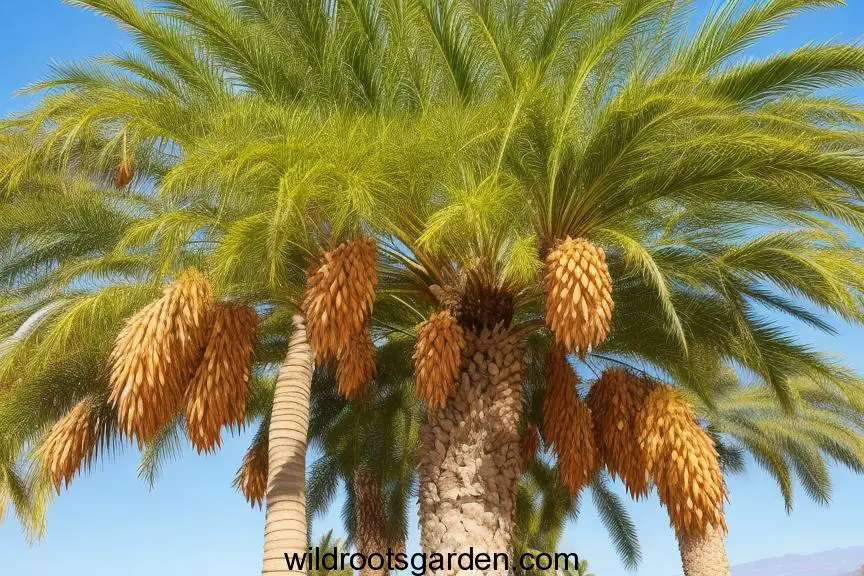
African Wild Date Palm: Phoenix reclinata
Known as the Senegal Date Palm, Phoenix reclinata flourishes along African riversides. Its fruit may have an acquired taste, enjoyed by locals.
This palm has a sociable nature, growing in clusters from suckers, slanting gracefully. It serves various purposes—construction, basketry, and more.
With brownish oval fruits, measuring under an inch, its seeds are ground into flour. Explore the African Wild Date Palm with this article’s succinct insights.
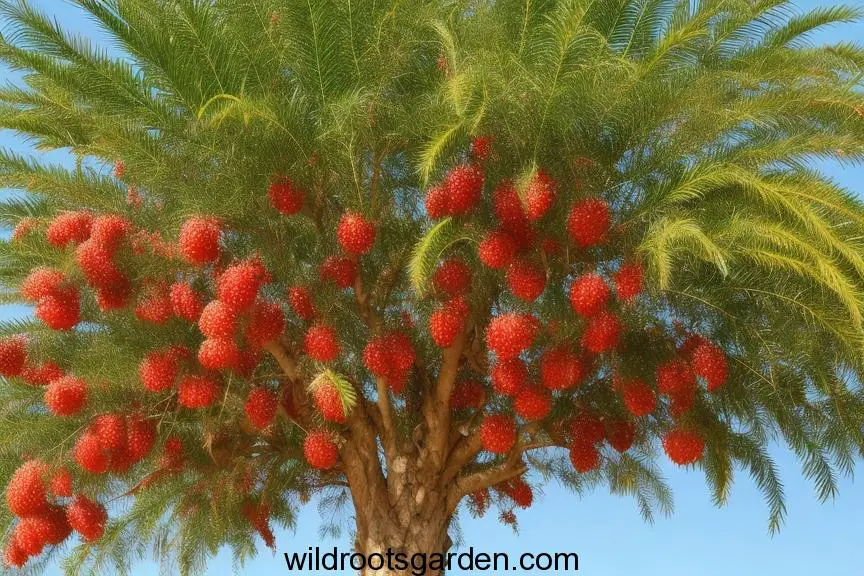
Cherry Palm: Pseudophoenix Vinifera
Known as the Wine Palm, Pseudophoenix vinifera, found on Hispaniola, faces endangerment due to wine production’s impact.
Palm fronds serve diverse purposes, while the distinctive red fruits, 1-2 inches round, are unappealing for consumption. Instead, they are used as animal feed. Explore Cherry Palm’s story in this concise article.
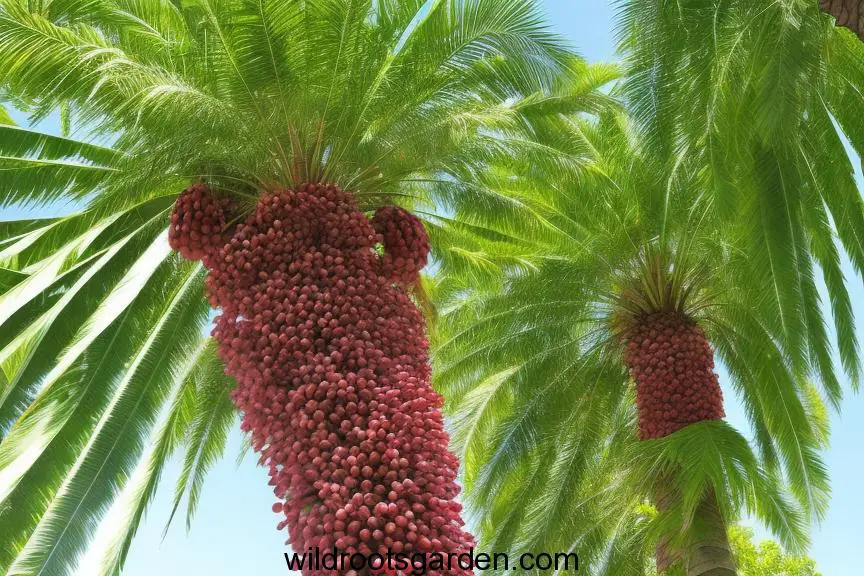
Exploring Diverse Palm Tree Fruits
Beyond the familiar, an array of palm tree fruits beckons exploration. Here are a few notable mentions:
PALMYRA FRUIT: Doub Palm or Palmyra Palm (Borassus flabellifer) Native to South and Southeast Asia, its fruit is a prized ingredient in the region’s cuisine. With sweet, jelly-like flesh, the Palmyra Fruit offers a distinctive flavor experience. Delve into the diverse world of palm tree fruits in this concise article.
Betel Nut: A Stimulating Palm Tree Fruit
Derived from the Areca Palm (Areca catechu), the Betel Nut, also known as the Areca nut, serves as a stimulant. Revered for its energy-boosting effects, it accelerates the central nervous system, inducing an adrenaline rush. Prevalent in Asia, the Pacific Islands, and East Africa, its consumption is evident through purplish-tinted teeth in long-term users.
However, caution is essential due to potential adverse effects. Prolonged use can lead to tooth loss and is associated with carcinogenic risks.
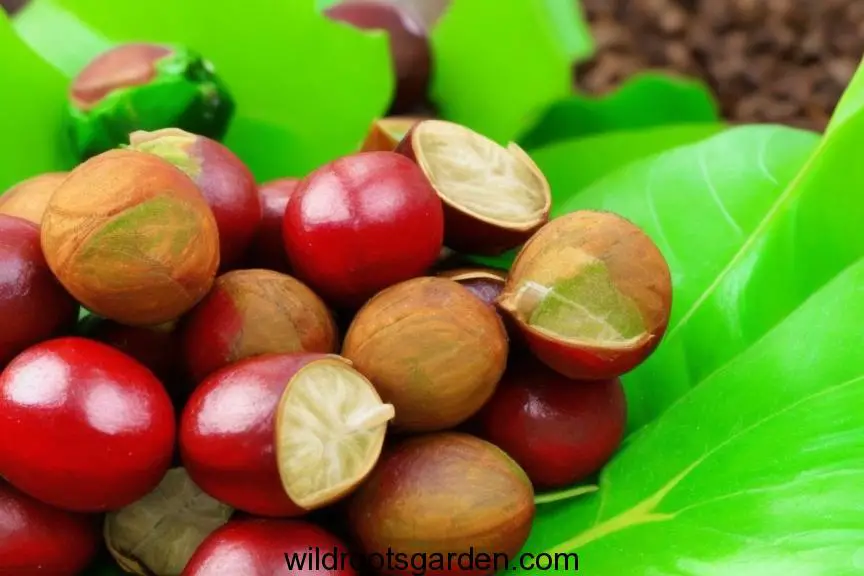
Numerous other palm tree fruits offer unique flavors and culinary applications, reflecting diverse local cultures. Examples include the Jelly Palm Fruit from Butia capitata, fan palm tree fruits, and those from Washingtonia robusta and Washingtonia filifera species. Embrace novelty by exploring the myriad fruits from palm trees. Discover more in this concise article.
Frequently Asked Questions
1. What are some common types of fruits that come from palm trees?
Palm trees yield a variety of delicious fruits. Some common examples include dates, coconuts, açaí berries, and palm fruits. These fruits are not only tasty but also packed with essential nutrients.
2. How are coconuts harvested from palm trees?
Coconuts are typically harvested by skilled climbers who use special tools to cut the mature coconuts from the tree. These coconuts are then collected, and the outer husk is removed to reveal the familiar hard shell containing the coconut water and meat.
3. Are dates the only type of sweet fruit produced by palm trees?
While dates are one of the most well-known sweet fruits from palm trees, they are not the only ones. Some palm species produce other sweet fruits like jelly palms, which yield a sweet, jelly-like substance around the seeds that can be eaten.
4. What are the health benefits of consuming fruits from palm trees?
Fruits from palm trees are often rich in vitamins, minerals, and antioxidants. For example, dates are high in fiber and provide essential minerals like potassium and magnesium. Coconuts offer hydrating coconut water and nutrient-rich coconut meat, while açaí berries are known for their high antioxidant content.
5. Can palm fruit be eaten, and what does it taste like?
Yes, palm fruits are edible and are enjoyed in various cuisines. The taste of palm fruit can vary depending on the species and ripeness. Some are sweet and have a flavor reminiscent of tropical fruits, while others might have a milder taste with hints of nuttiness. They are used in both sweet and savory dishes in different cultures.
Final Thoughts
In conclusion, the significance of fruits from palm trees cannot be understated. These remarkable trees have been providing sustenance, shelter, and various resources to human civilizations for centuries. The diversity of palm tree species and their adaptability to different climates have made them an essential part of various cultures and ecosystems around the world.
From the delicious dates of the date palm to the nutritious coconut from the coconut palm, these fruits offer a rich source of nutrients, vitamins, and minerals. Moreover, palm trees contribute to the environment by preventing soil erosion, providing shade, and supporting biodiversity.
Culturally, palm trees hold deep-rooted symbolism in many societies, often representing prosperity, longevity, and hospitality. Their versatile use, not only for food but also for materials like fibers, timber, and oil, showcases their economic importance.
However, it’s crucial to consider sustainability when harvesting and utilizing palm tree fruits. Irresponsible farming practices, deforestation for palm oil production, and habitat destruction can have adverse effects on both local ecosystems and global environments.
In the face of these challenges, it is essential to strike a balance between benefiting from the valuable resources palm trees offer and ensuring their preservation for future generations. By promoting sustainable cultivation, responsible consumption, and conservation efforts, we can continue to enjoy the bounties of fruit from palm trees while safeguarding the natural world.

